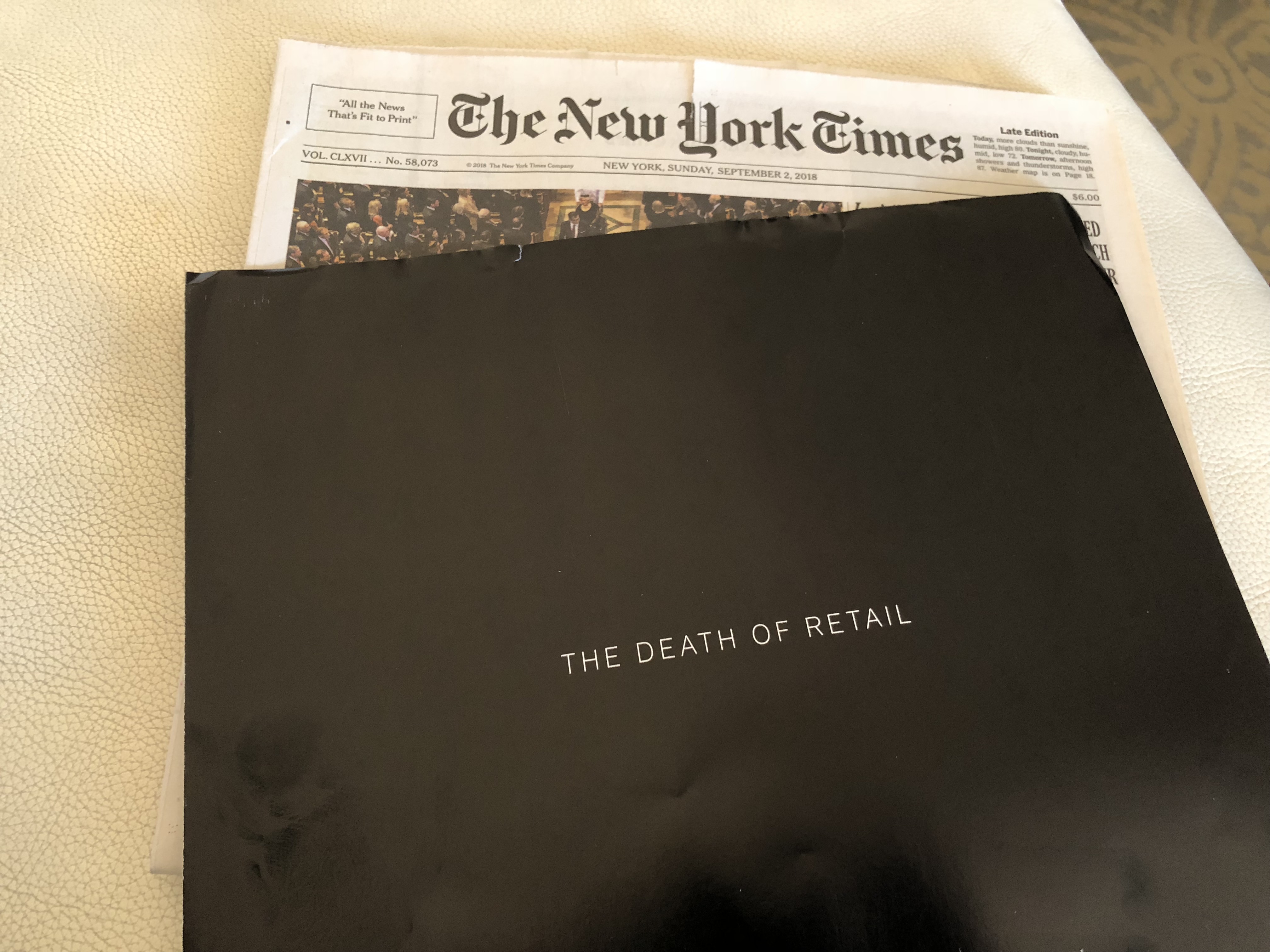I still think that wrap around ads, when well designed, printed on glossy or superior paper, and when not done on a daily basis, can be effective, while helping the newspaper’s monetization efforts.
However, based on the backlash I have seen after posting highlights of my blog on Twitter and Facebook, I am aware that wrap around ads have many detractors. Here are some of the comments I have received via Facebook, and my dialog with those who wrote me:
From Raju Narisetti, professor at Columbia University’s Graduate School of Journalism, and a former editor with The Wall Street Journal, The Washington Post, Mint (India), and CEO of Gizmodo.
Raju Narisetti In India, the “front page” has mostly disappeared because of these ads, now every day. They migrated from being wraps to actually taking over everything under the masthed as the money gets more and more tempting. Over time it completely devalues the “front page” in eyes of readers.
To which I answered:
Mario Garcia I agree, but if a wrap around appears only occasionally, and with great, glossy quality paper, as we see here, then the effect is more welcome by the readers.
The conversation:
James Okula is an Atlanta-based retired advertising agency director :
James Okula Real newspaper readers hate them. We also hate newspaper sections that are now only one fold thick. Newspapers are stuck in the middle between decreasing readership and increasing costs – compounded by millennial readership who only read digital editions and news cycles which now change in 15 minutes. When large city papers (like the AJC) begin to look like a weekly, offering fewer local reporters and more wire service stories, it truly won’t be long before print editions become a memory and we are all forced to read the news via text alerts and online editions. It appears like newspaper management already has the death of print circled on their calendars.
Mario Garcia I agree with your smart comments, gents. You both are “media” people whom I respect. However, I believe that the front page has already been devalued by the presence of 24/7 digital news cycles. Nobody breaks news on a printed front page anymore. Although, I am a firm believer that we can still surprise on that page with smart stories, what I call “invisible” stories, which offer discovery and analysis. A good print newspaper editor tells the reader: I know you know, but I am going to tell you more. Sorry, guys, but I think that wrap around ads, if done elegantly, on good paper, and on selected occasions, do no harm.
Raju Narisetti I have no issues…but once you feed the beast, the argument “on selected occasions” will soon disappear since that is a subjective call vs turning down xx money each time. Of course an editor could say only x/month but it goes downhill quickly in a business where ad revenue is fast leaving print.
J Ford Huffman is a former Deputy Managing Editor at USA TODAY
J Ford Huffman This digital-and-print NYT subscriber loved the surprise of the elegant RH poster ad, and I knew that the front age inside would also surprise me when I came to it. Although I “watch” the news several times a day on the NYT and TWP websites I appreciate seeing the print editors’ sense of news hierarchy on a print layout; a digital layout usually just inserts stories into a template’s holes.
J Ford Huffman Being familiar with India’s Hindustan Times, I appreciate Raju’s point. But for this reader, a cover-page poster ad does not devalue the news inside. However, editors ought to be more cognizant of the cover ad and ought to design the print “front” page knowing the layout need not be a cacophony of competing headlines that an ad-free, street-sale front page might require. Also in India, an irony: Amazon, the king of online shopping, frequently buys print cover ads. Amazon values print.
Gordon Preece is a former retired art director at the Winnipeg Free Press
Gordon Preece Have to disagree with you this time Mario…i definetely think it affects street sales… looking at it on in a store stand or box hard presents a compelling image and reason to entice a buyer…. and even though advertising of course is paramount for survival it does leave a negative impression to a reader that the paper puts advertising before the product….. news.
James Okula Mario, I don’t believe I’ve ever seen any on the Atlanta Journal-Constitution that weren’t ad oriented (1/3 vertical page with full back page wrap-around of a section – always grocery store, hearing aids or other such ads, which are more of a nuisance than anything of a creative editorial platform. Suggests control of the paper taken by the sales department.
I welcome your comments. I believe this is a necessary discussion, and I can’t imagine that wrap around ads are about to stop any time soon.
